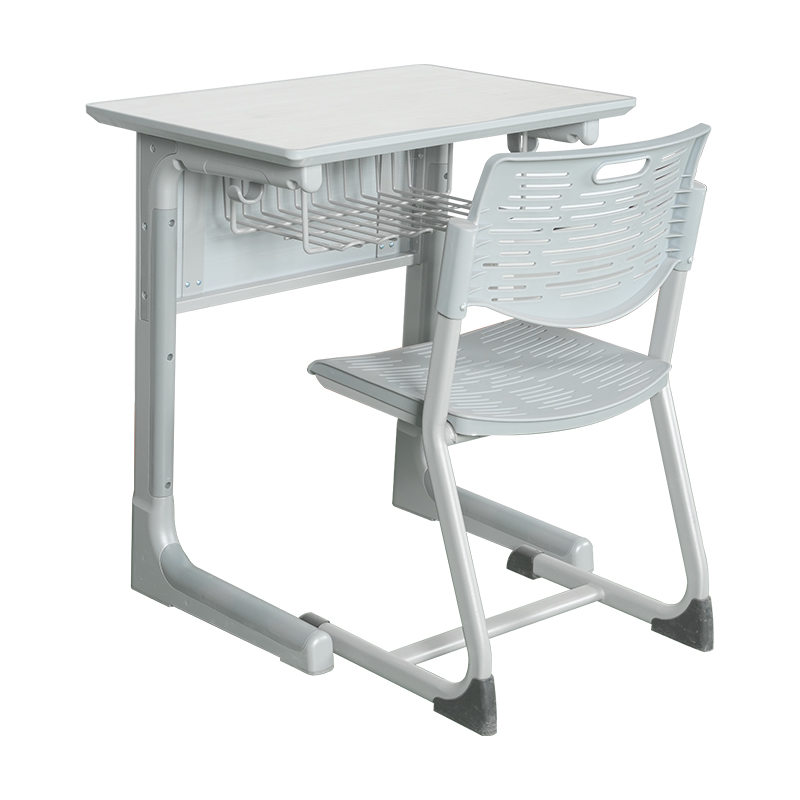The single classroom style student desk and chair is generally built to accommodate a single user comfortably, with proportions designed to support a range of body sizes depending on the age group. For younger students in elementary school, the desk height typically ranges from 50 to 60 cm, while the chair seat height is between 30 and 38 cm. These measurements support smaller children, allowing their feet to rest flat on the floor and their arms to align comfortably with the desktop.

As students progress to higher grades, the dimensions of the single classroom style student desk and chair increase accordingly. In middle and high school settings, desks often range between 65 and 75 cm in height, while chairs stand at 40 to 46 cm from the ground. This scaling ensures that older students sit comfortably without straining their backs or necks during long study sessions.
For adult learners, the single classroom style student desk and chair may be even taller. Desks designed for adult education or university lecture halls often feature a desktop height of 75 to 80 cm, with chair seat heights around 45 to 48 cm. These dimensions are aimed at supporting larger body frames and providing the ergonomic benefits needed for extended use.
The size of the single classroom style student desk and chair also affects how classrooms are laid out. Since each set is meant for individual use, schools need to consider how many units can comfortably fit within a classroom while maintaining proper movement and accessibility. On average, a desk surface measures about 60 cm in width and 45 cm in depth, providing sufficient space for notebooks, textbooks, and sometimes a digital device.
When arranged in rows or columns, the single classroom style student desk and chair must allow for adequate aisle space between sets. Typically, a gap of 60–80 cm between rows ensures that students can move in and out of their seats without disturbing others. The compact nature of these desks and chairs allows schools to optimize the learning environment without overcrowding.
Some versions of the single classroom style student desk and chair come with adjustable features to better accommodate a wide range of users. Adjustable legs on both desks and chairs allow schools to modify height levels depending on changing classroom needs. This feature is especially useful in multi-grade classrooms or in schools that rotate furniture use between age groups.
Moreover, modular designs of the single classroom style student desk and chair allow them to be moved and stored easily. Some include foldable chairs or stackable frames, saving storage space and providing flexibility in multipurpose rooms. These practical elements are considered part of the overall dimension strategy, contributing to both usability and classroom efficiency.
While dimensions often focus on height and surface area, the thickness and structure of the single classroom style student desk and chair also contribute to its overall footprint. Metal frames typically have leg tubes of 1–2 inches in diameter, while tabletops may be 1.5–2 cm thick, depending on the material used. These proportions are designed to strike a balance between durability and ease of handling.
The frame of the single classroom style student desk and chair is often made of steel or aluminum, providing a stable yet lightweight structure. This makes it easier for school staff to clean or rearrange furniture, all while maintaining the safety and strength needed for daily use.
Proper dimensions are not only about space planning—they are closely linked to student health. The single classroom style student desk and chair must support healthy posture. If the seat is too high or too low, students may experience discomfort or strain in their lower back and shoulders. Similarly, a poorly sized desktop can awkward arm and wrist positioning, which may affect handwriting or computer use.


 English
English русский
русский Español
Español عربى
عربى
